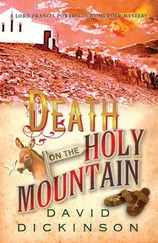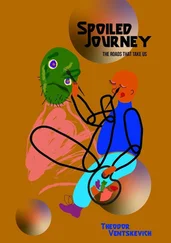But it was sorcery that was the declining city’s greatest vice. In an age when demons were considered to fill the air as thickly as flies in a Turkish market (Gregory the Great always used to recommend making the sign of the cross over a lettuce in case you swallowed a demon that happened to be perched on its leaves), in Antioch things had come to such a pass that demonic activities were rife even among the clergy – or so it was whispered. The Antioch hippodrome was a famous centre of such witchery: not only were all kinds of magic practised there against horses and charioteers, but the galleries were packed with nude classical statues believed to be the haunt of those demons who specialised in exciting the carnal passions. Indeed the Byzantine version of the Faust tale involved a Jewish necromancer leading a presbyter to the hippodrome in the middle of the night. The presbyter has been sacked from his position as oikonomos (treasurer) by the new bishop. The necromancer succeeds in conjuring up Satan himself, who promises to help the presbyter regain his former position if he first agrees to become the Servant of Darkness, and kisses his cloven foot in submission. The presbyter does as he is bidden, and sells his soul to the Devil.
Surrounded by similar stories, the worried Antiochians looked for guidance not to their clergy, nor to the Byzantine governor or the magister militum . Instead they turned to St Symeon Stylites the Younger, a renowned hermit who had set up his pillar a few miles outside the city. From there he issued a series of dreadful threats and warnings to the faithful, calling on them to repent and mend their ways.
His powers were remarkable. According to his anonymous hagiographer the dust from his clothes was more powerful than roasted crocodile, camel dung or Bithynian cheese mixed with wax – apparently the usual contents of a Byzantine doctor’s medicine chest. This dust could cure constipation, cast leprosy on an unbeliever, bring a donkey back to life and restore sour wine to sweetness. It was clearly a particularly handy thing to have on board ship in the event of a storm. A certain Dorotheus, a cleric at Symeon’s monastery, sailed during the forbidden period of the year in the midst of winter, trusting to the protection of his stylite master. Far out to sea, however, the vessel ran into a tremendous storm which lashed it with waves so high they rolled over the deck. The Captain was in despair, but Dorotheus took some dust which had been blessed by St Symeon and sprinkled the ship with it; ‘a sweet fragrance filled the air, the churning sea was pacified, a fair wind filled the sails and safely brought the ship to its destination.’
Symeon was clearly not a man to be trifled with. An Antiochian brickmaker who privately voiced his view that Symeon’s miracles might not be the work of God but instead of the Devil found that his hand promptly turned putrid, and ‘it was only after he shed many tears of repentance that he was forgiven and restored to health’. Symeon could have an equally dramatic effect on other parts of the body. Moschos tells a story of a renegade monk who gave up the habit, left his monastery in Egypt and settled in Antioch. One day, on his way back to town from a trip to the coast, the ex-monk decided to visit Symeon’s pillar. He had no sooner entered the enclosure than the stylite pointed him out amid the crowd of assembled pilgrims: ‘Bring the shears!’ cried Symeon, miraculously divining his visitor’s monastic past. ‘Tonsure that man!’
Packing him off back to his Egyptian monastery, Symeon promised the man a sign that he had been granted divine forgiveness. It duly arrived: one Sunday, back in his cloister, when the monk was celebrating the Eucharist ‘one of his eyes suddenly came out’. This, oddly enough, was considered a good thing, at least by Symeon’s more ardent admirers. ‘By this sign,’ comments a breathless Moschos, ‘the brethren knew that God had forgiven him his sin, just as the righteous Symeon had foretold.’
After lunch, refreshed, I set about trying to find a driver willing to take me to what remains of the stylite’s pillar on the Wonderful Mountain, a few miles south of modern Antakya.
In the main bazaar – a vaulted Ottoman street that still follows the line of the old Byzantine corso – I met a pious and thickly bearded driver named Ismail. He owned an ancient and much repainted Dodge truck, currently coloured lemon-yellow. We haggled for long enough for both of us to feel we were being swindled, and after Ismail had attended midday prayers we drove off in the truck, jolting out of Antioch, heading due south.
Olives were everywhere: long regimented lines of trees forming neat chequerboard patterns against the ash-coloured soil of the hills. But for the occasional minaret poking up beyond the groves and the groups of baggy-trousered peasants loading firewood onto carts, it could have been Umbria. In the valley to our left shepherds and their barking dogs were leading herds of long-eared goats and sheep, bells tinkling, through the mulberries and aloes. Within a few minutes the perfect pyramid of Mons Mirabilis rose up through the morning haze.
Bouncing off the main road onto a track, we climbed a dry wadi in a cloud of dust. We passed an old couple with mattocks in their hands, hoeing a barren terrace. The track continued to spiral steeply upwards; slowly a great vista opened up around us. Ahead lay the distant metallic glint of the Mediterranean; to the south, Mount Cassius and the olive groves of Syria; to the north, the hot, flat, plains of Cilicia. Immediately below us, through the heat haze, we could see the meandering course of the sluggish Orontes, and on either side lines of dark green cypresses.
When John Moschos came here, all the peaks within view were crowned by stylites, and competition between them was rife: if one was struck by lightning – something that clearly happened with a fair degree of frequency – the electrocuted hermit’s rivals would take this as a definitive sign of divine displeasure, probably indicating that the dead stylite was a secret heretic. Judging by what Moschos has to say in The Spiritual Meadow , visiting these pillar saints was a popular afternoon’s outing for the pious ladies of Antioch’s more fashionable suburbs. The most chic stylite of all was undoubtedly Symeon, whose pillar lay a convenient palanquin’s ride from the waterfalls of Daphne, the resort where Antony took Cleopatra for their honeymoon.
Today it seems that no one comes to Symeon’s shrine. There are only a handful of Christians left in Antioch, and they have better things to worry about than the ruins of a forgotten hermit. The broken pillar is surrounded now by the ruins of the churches, monasteries, pilgrims’ hostels and oratories that sprang up around it, a crumbling panorama of collapsed walls and fallen vaults. The only intruders are shepherds looking for somewhere to shelter their flocks during storms. Even the dirt track no longer reaches the pillar. I left Ismail bobbing up and down on his prayer carpet at the end of the path, and climbed up to the summit on my own.
Rising to the crest of a hogsback ridge, I could see above me the lines of honey-coloured masonry that marked the exterior wall of the stylite’s complex. But it was only as I got much nearer to the ruin that I began to take in the true scale and splendour of the building: high on that empty hilltop with the wind howling over the summit lay a vast cathedral, constructed with great skill out of prisms of finely dressed stone. It was built with deliberate extravagance and ostentation: the basket capitals of solid Proconessian marble were lace-like and deeply cut; the pilasters and architraves were sculpted with an imperial extravagance. It was strange: a ragged, illiterate hermit being fawned over by the rich and highly educated Greco-Roman aristocracy; yet odder still was the idea of a hermit famed for his ascetic simplicity punishing himself in the finest setting money could buy. It was like holding a hunger strike in the Ritz.
Читать дальше












